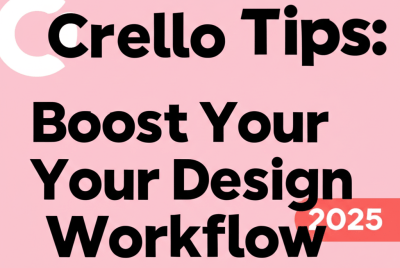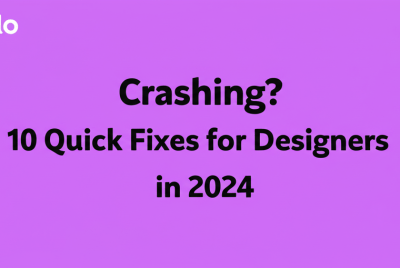In the post-COVID era, remote salaries for designers and also workspaces have gained prominence as more jobs shift to remote work and home offices. A workspace is however not just a designated area for completing tasks; it’s a personalized environment equipped with tools that cater to specific professional needs. For instance, an engineer might find a workspace stocked with tapes and measuring instruments essential, while a fashion designer might prioritize tape measures and scissors. For designers, however, a workspace goes beyond gadgets—it’s about equipping yourself with the must-have tools that enhance productivity and creativity.
The allure of the latest productivity gadgets often overshadows the importance of foundational tools in a workspace. But while we have gadgets that can make tasks easier, workspace tools are indispensable—they are the backbone of a functional and efficient work environment.
The Cold Debate: Man vs Tools
Since man lifted a branch or sharpened one he gained an advantage over his environment. Since then tools have emerged for facilitating work such as color combo pickers for designers.
The question often arises as to what’s more important, the man or the tool, and some circles regard tools as a threat to creativity. But the truth is various challenges exist while executing work and tools are a common solution.
In this post, we acknowledge the top 5 tools designers should have for workplace performance while ensuring a healthy environment.
Top 5 Essential Tools for Your Workspace
1. Lighting
Proper lighting is fundamental in any workspace, particularly for designers who spend long hours in front of screens. Reports place designers as professionals spending 18 hours a day exposed to screen glare. Prolonged exposure to digital screens can lead to digital eye strain, characterized by headaches, eye discomfort, and even long-term vision problems.
You can prevent headaches with proper workspace lighting designed to evenly illuminate work environments. These lights ensure the right amount of brightness and are easy on the eyes to prevent squinting.
Some Key Tips to consider when opting for workplace lighting:
- Warm Lights: Opt for lighting within the 1500-3000 Kelvin range. This warm light reduces the impact of blue light from screens, which is notorious for causing eye strain.
- Power Efficiency: Choose energy-efficient lighting to keep electricity bills low while maintaining adequate brightness.
- Durability: Invest in lighting from reputable brands known for quality. This minimizes the need for frequent replacements and ensures uninterrupted work.
- Positioning: Place lights overhead or behind your workspace to ensure an even spread of illumination, reducing reliance on smaller, less effective light sources.
2. Ergonomics
Ergonomics, derived from the Greek word “ergon” meaning work, refers to designing tools that optimize posture and comfort during work. While designers are often focused on aesthetics and functionality in their work, it’s essential to consider the impact of poor posture on health. Ergonomic tools ensure that your body remains aligned, preventing strain and reducing the risk of injuries that could disrupt your workflow.
Essential Ergonomic Tools:
- Ergonomic Chairs: These chairs are designed to support your spine and maintain proper alignment, reducing the risk of back pain.
- Phone Holders: Keep your devices within easy reach and at eye level to prevent neck strain. Many phone holders also offer built-in charging, ensuring your devices are always powered.
- Laptop Stands: Elevate your laptop to eye level, promoting better posture and reducing neck and shoulder strain.
Tips for Choosing Ergonomic Tools:
- Adjustability: Choose tools that allow for multiple adjustments to fit your height and work style.
- Durability: Invest in items made from strong materials to avoid frequent repairs and replacements.
- Heat Dissipation: For devices like phone holders and laptop stands, ensure they have features for heat escape to prevent overheating.
3. External Hard Drives
An external hard drive might seem like a simple addition, but it’s an essential tool for any designer. These devices provide a reliable way to back up and store your work, ensuring that important projects are safe and accessible. Whether you’re working on large design files or intricate motion graphics, having a dependable storage solution is non-negotiable.
Key Considerations for Hard Drives:
- SSD (Solid State Drives): SSDs offer faster data transfer speeds compared to traditional HDDs (Hard Disk Drives), making them ideal for designers who work with large files.
- Storage Capacity: Determine your storage needs based on the file sizes you typically work with. Motion designers might require more storage than graphic designers.
- Pricing: While high-end options like Transcend, Chupez, and Sandisk are popular, there are affordable alternatives that perform well without breaking the bank.
4. Sketchpads
Even in a digital age, sketchpads remain a crucial tool for designers. These creative notebooks allow you to quickly jot down ideas, draft logos, or sketch website layouts before transitioning to digital formats. Sketchpads provide a tactile experience that digital tools can’t replicate, making them indispensable for brainstorming and initial concept development.
Choosing the Right Sketchpad:
- Material: Select a sketchpad that suits your drawing style. For instance, watercolor designers might need thicker paper, while logo designers can opt for standard sketchpads.
- Price: There’s no need to splurge on a sketchpad; even affordable options can be highly effective.
- Page Count: Ensure your sketchpad has enough pages to last through extensive projects without the need for frequent replacements.
5. Noise-Cancelling Headphones
Noise pollution can be a major distraction in any work environment, negatively impacting concentration and productivity. Research from Chalmers University of Technology shows that even moderate background noise, like that from an office or kitchen, can impair cognitive performance. For designers, who often need to focus intensely on their work, noise-cancelling headphones are a game-changer.
Tips for Choosing Noise-Cancelling Headphones:
- Price: Invest in a pair that balances quality with affordability—there’s no need to go overboard.
- Comfort: Look for headphones with soft, cushioned ear pads, especially if you’ll be wearing them for extended periods.
- Durability: Read reviews and recommendations to ensure you’re choosing a model that will stand the test of time.
Make your Space a workspace
A well-equipped workspace is more than just a collection of tools—it’s an investment in your productivity, creativity, and overall well-being. By carefully selecting the right tools, from ergonomic chairs to noise-canceling headphones, you can create an environment that supports your best work. So, don’t just read about these tools—take action and start building the workspace you deserve today.
Start your buying journey
Want to take action on your workspace today? Here are great workspace tools at affordable prices to start your journey.
- Led Tracking lights
- Chairs, Holders, Laptop stand
- Storage devices
- Sketchpads
- Noise canceling headphones
Want a full list of gadgets for productivity? Check out our guide on productivity gadgets for designers.

